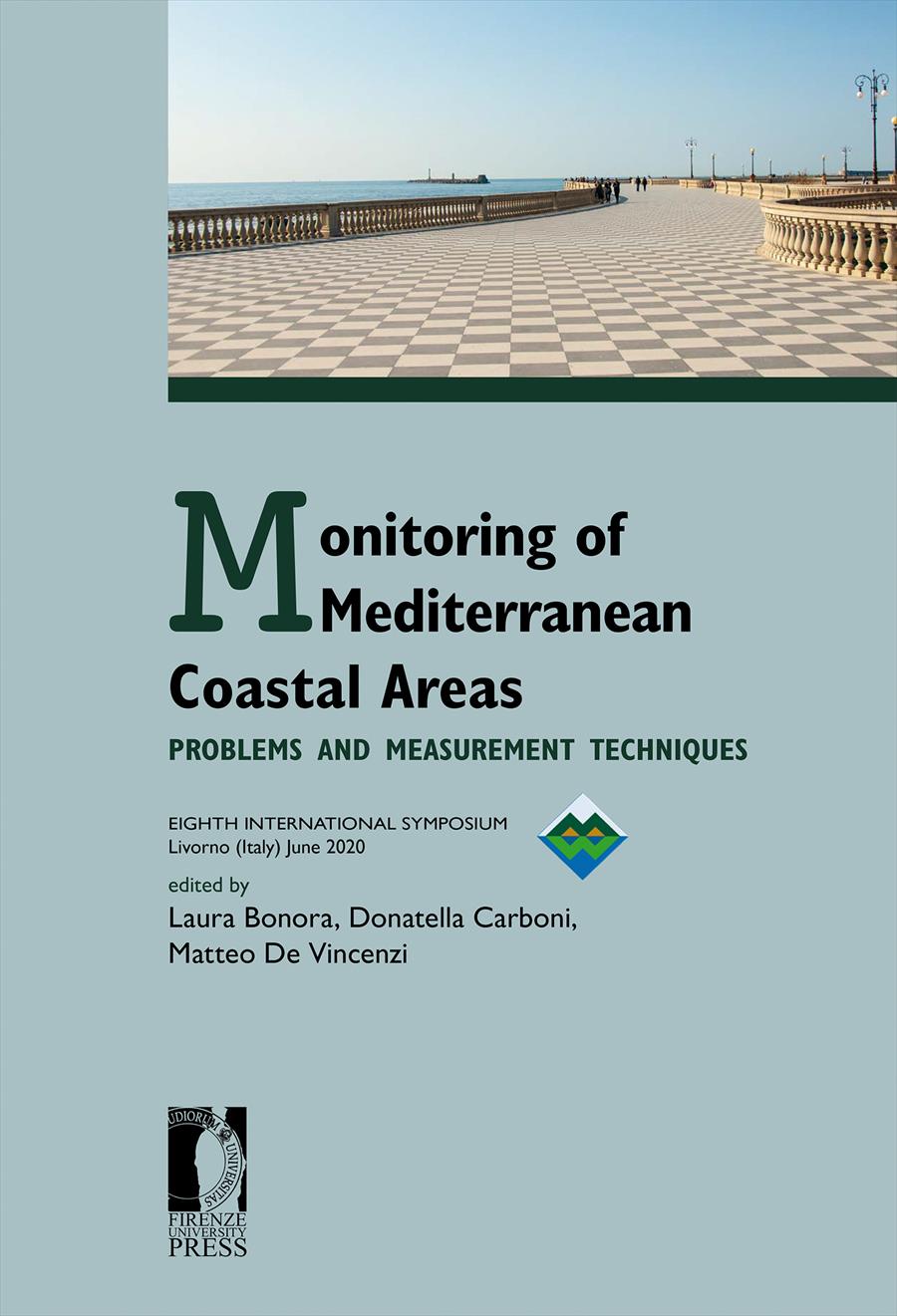- Eighth International Symposium “Monitoring of Mediterranean Coastal Areas. Problems and Measurement Techniques”
- A cura di Laura Bonora, Donatella Carboni, Matteo De Vincenzi
New Features of the rivershore: climate change and new relations between town and water
- Alessandra Casu
- Jlenia Zaccagna
- © 2020 Author(s) |
- CC BY 4.0
- DOI: 10.36253/978-88-5518-147-1.18
Climate scenarios show that Mediterranean areas will be affected by torrential patterns of rain, that can cause difficulties in urban life in coastal areas, mainly due to the draining systems and to the sea-level. Lisbon is on the estuary of Tagus river, which would be probably affected by run-off and by the forecasted rising sea-level. Redesigning its relationship with water, trying to make this urban area more resilient, becomes crucial and asks to study run-off and sea-level rise for 2100 and for intermediate steps, to adapt the urban life and its spaces to the occurring scenarios.
- Keywords:
- Waterfront,
- Climate Change,
- Adaptation,
- Resilience,
- Urban Strategic Projects,
University of Sassari, Italy
University of Sassari, Italy
- Antunes C., (2016), “Monitoring sea level change at Cascais tide gauge”, Journal of Coastal Research, vol. 64, pp. 870-874
- Bussadori V. (2013), “La Pianificazione come strumento di adattamento ai cambiamenti climatici”, in: Musco F., Zanchini E. (eds.), Il Clima cambia le Città. Atti della conferenza, Venezia: Corila, pp. 20-22
- Camara Municipal de Lisboa, (2017), EMAAC- Estratégia municipal de adaptação às alterações climáticas de Lisboa, Lisbon.
- Costa J., Figueira de Sousa J., Matos Silva M., Santos Nouri A., (2013), “Climate change adaptation and urbanism: A developing agenda for Lisbon within the twenty-first century”, Urban Design International, vol. 19, pp 77-91.
- Da Cunha L.V., Proença De Oliveira R., Nascimento J., Ribeiro L., (2007), “Impacts of climate change on water resources: a case-study for Portugal”, in: Water in Celtic Countries: Quantity, Quality and Climate Variability. Proceedings of the Fourth Inter
- Holling C. (1973), “Resilience and stability of ecological system”, Annual Review of Ecology and Systematics, n. 4, pp. 1-23.
- IPCC (2014), “Summary for policymakers”, in: Id., Climate Change 2014: Impacts, Adaptation, and Vulnerability. Part A: Global and Sectoral Aspects. Contribution of Working Group II to the Fifth Assessment Report of the Intergovernmental Panel on Climate,
- Mishra S.K., Singh V. (2003), Soil Conservation Service Curve Numer (SCS-CN) Methodology, Dordrecht: Springer
- Nijhuis S., Stolk E., Hoekestra M. (2017), “Teaching Urbanism: the Delft approach”, Urban Design and Planning, n. 170, issue DP3, pp. 96–106
- Stern N. (2007), The Economics of Climate Change: The Stern Review, Cambridge U.P.
- Walker B.H., Salt D. (2006), Resilience thinking: Sustaining ecosystems and people in a changing world, Washington DC: Island Press
Informazioni sul capitolo
Titolo del capitolo
New Features of the rivershore: climate change and new relations between town and water
Autori
Alessandra Casu, Jlenia Zaccagna
Lingua
English
DOI
10.36253/978-88-5518-147-1.18
Opera sottoposta a peer review
Anno di pubblicazione
2020
Copyright
© 2020 Author(s)
Licenza d'uso
Licenza dei metadati
Informazioni bibliografiche
Titolo del libro
Eighth International Symposium “Monitoring of Mediterranean Coastal Areas. Problems and Measurement Techniques”
Sottotitolo del libro
Livorno (Italy) June 2020
Curatori
Laura Bonora, Donatella Carboni, Matteo De Vincenzi
Opera sottoposta a peer review
Anno di pubblicazione
2020
Copyright
© 2020 Author(s)
Licenza d'uso
Licenza dei metadati
Editore
Firenze University Press
DOI
10.36253/978-88-5518-147-1
eISBN (pdf)
978-88-5518-147-1
eISBN (xml)
978-88-5518-148-8
Collana
Proceedings e report
ISSN della collana
2704-601X
e-ISSN della collana
2704-5846
